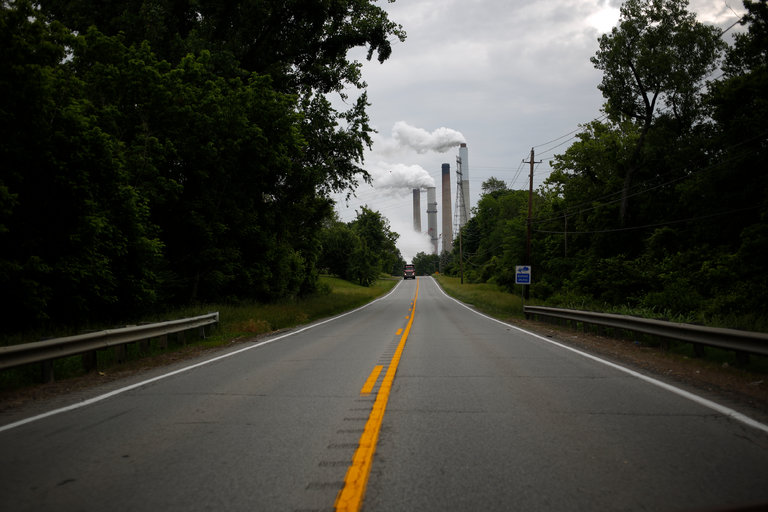New York – President Trump’s decision to abandon the Paris climate accord — and his broader unwillingness to fight climate change — will have broad economic consequences.
Exactly what those consequences will be, though, depends on many things. It’s not just the political decisions that will matter, but also the pace of scientific advances around renewable energy, the vicissitudes of commodity markets, and the investment decisions of businesses, governments and individuals worldwide.
The very discussion rapidly turns to questions that are as much philosophical as economic. How much do you value existing jobs versus different jobs that might be created? And how much do you value the future versus the present?
Consider a relatively narrow question involving the economics of climate change mitigation: How much will the Obama administration’s Clean Power Plan, a key element of its efforts, increase the electricity prices that Americans pay?
Industry-funded research from NERA Economic Consulting estimated that it would increase retail electricity bills by 0.3 percent in the 2020s; the Environmental Protection Agency estimated a 2 to 3 percent increase in 2020 and a decrease by 2030; and Synapse Energy Economics and M.J. Bradley & Associates both projected a significant decrease in electricity costs, as much as 17 percent by 2030.
In this case, not only is the extent to which the plan will affect power bills uncertain, but also the direction. In these forecasts, it matters a great deal how quickly prices fall for generating solar and wind power; how much energy-efficiency programs reduce demand for electricity; the future price of natural gas; and how aggressively states cooperate to achieve emissions targets.
This challenge of projecting the consequences of climate action gets all the harder when you go from a narrow question like the cost of electricity a few years down the road to broader questions about jobs, incomes and G.D.P.
Any credible effort to combat climate change endangers millions of jobs involved in the extraction and processing of fossil fuels. But the reality of the modern economy is that industries are constantly in flux, and the workers who lose jobs may well find better ones.
The NERA study, for example, with its pessimistic take on the economic impacts of regulating greenhouse gases, projects that the efforts will cost the United States economy 2.7 million jobs by 2025 and 31.6 million by 2040.
But that’s the way the labor market works in general, with some sectors expanding at any point in time and others contracting. Right now, the retail sector is bleeding jobs as physical stores give way to more online shopping. The information-services sector shed more than a million jobs from 2001 to 2012. The share of jobs in manufacturing has been falling pretty much continuously since World War II.
So the real question is not whether some jobs involving fossil fuels will go away if greenhouse gases are regulated more stringently; what matters is whether the jobs that emerge to replace them will pay better or worse.
If no jobs emerge at all and unemployment rises, then that’s a failure of macroeconomic stabilization — which is to say, it’s the Federal Reserve’s fault for keeping interest rates too high.
There’s a parallel with trade policy. Major trade deals have minimal effects on the overall number of jobs, and increase incomes on average, but may have a particularly large job-reducing effects in particular locations and among particular workers.
In other words, it’s one thing to say that jobs drilling for oil and mining coal will go away even as jobs installing solar panels will be created. That sounds comforting — but if different people in different locations are doing those jobs, there can still be disruption.
And beyond the complexity of modeling how climate policies will affect the economy, and the judgment call of how much value to assign to preserving existing jobs, there is an even bigger question.
In pessimistic forecasts of the impact of climate change, the cost to adapt to a warming planet will be eventually be huge, potentially including vast expenditures to try to protect cities from rising seas, adjusting agriculture to new climate patterns, and countless other changes to business and the economy.
We don’t know exactly when those costs will arrive, how big they will be, and how much the kinds of climate action contemplated as part of the Paris agreement would shift the risk patterns. To use a business concept, we have to apply some kind of “discount rate” when thinking about future climate economic impacts.
A dollar today is worth more than a dollar tomorrow and a lot more than a dollar in 100 years. But what discount rate you set determines how much more.
So the question for the economy is not just how much more an aggressive climate policy would cost today; it’s how it would change those costs in the decades ahead, and how, as a society, we count the value of time.
The New York Times
